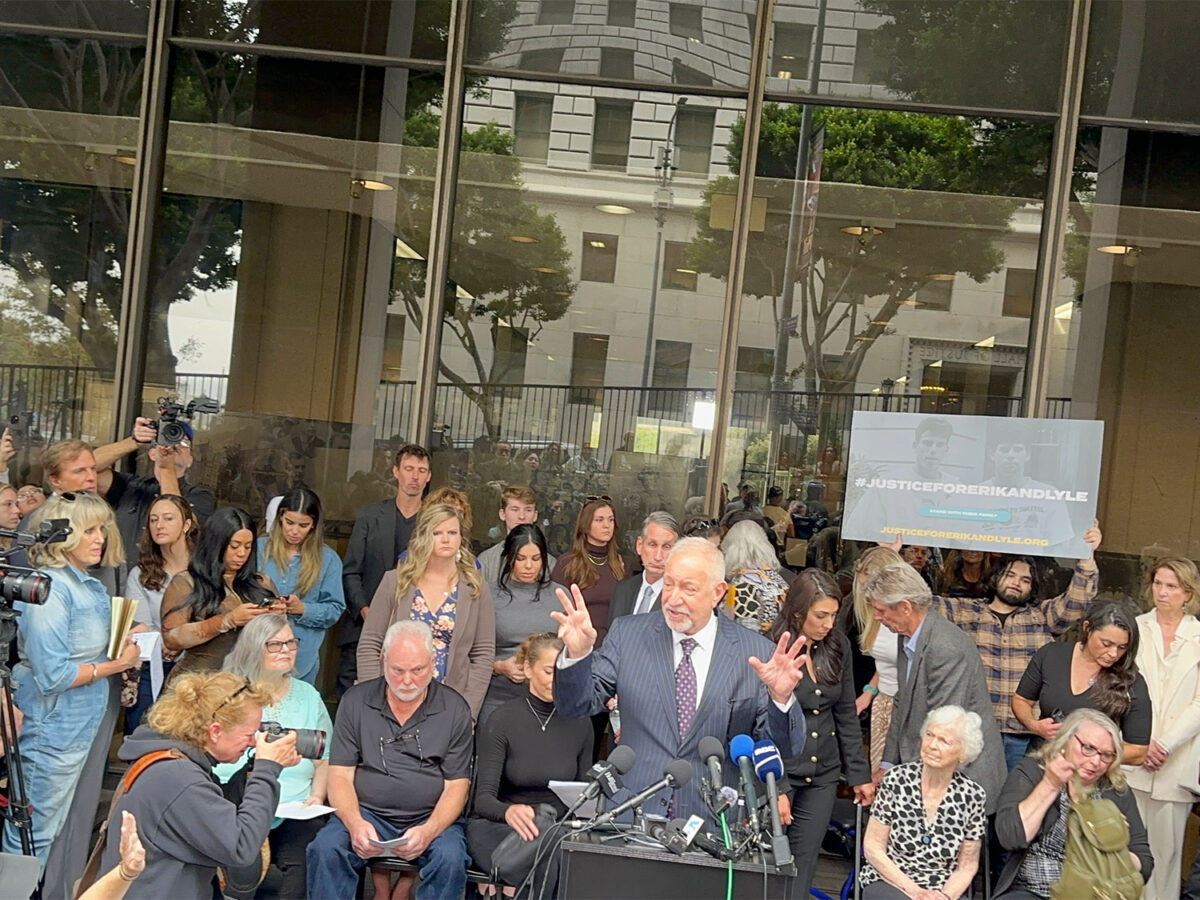The Rotary Club of Beverly Hills welcomed back one of its own members, Los Angeles County Board of Supervisors Chair Lindsey Horvath, as luncheon speaker this week. She is the youngest person (and first millennial) to serve on the board, and its youngest Chair. During her remarks, she updated her fellow Rotarians on topics ranging from the Metro to Measure G, which she defended and clarified to correct some common misconceptions.
Horvath first spoke in detail about the homelessness crisis. She has been a leading voice on that topic, authoring the county’s declaration of emergency on homelessness and appointing herself to the Los Angeles Homeless Services Authority (LAHSA) Commission.
“Sitting at that table to see what LAHSA does and doesn’t do has given me a lot of important insights,” said Horvath. “There are also several regional bodies that exist to address homelessness.” She went on to name several of them, adding a list of county and city departments, as well.
“This system is nearly impossible to understand, which is why I put myself at every seat at every table that has to do with homelessness to really try and diagnose what’s wrong,” she said, expressing frustration.
But Horvath has taken concrete action, as well, such as co-authoring a motion to audit the LAHSA Commission to understand where dollars are being spent.
She also had a positive note to add.
“We have locked arms with the mayor of Los Angeles and others throughout the region and have finally turned the tide in terms of reducing the number of unhoused that we have both in the city and county of Los Angeles. So, we know that the ways that we have changed our system thus far are working and moving us in the right direction, and there’s more work to be done in order to achieve more outcomes,” she said.
Horvath then turned to the topic of public safety, and the influence Beverly Hills has had on the region.
“Last Friday, I had the privilege of being at the Malibu Lost Hills station of the Sheriff’s Department where they opened a real time watch center that is a support for all the cities in the area and the unincorporated area. There was mention of the work that Beverly Hills had done. I wanted you to know that your impact is being felt regionally.”
The topic of public safety continued into the question-and-answer period when Horvath was asked about crime on the Metro.
She responded by pointing to statistics that show crime on the Metro is actually decreasing. She also noted that supervisors are looking to create a separate law enforcement agency to patrol the system.
“The thing that I’ve been advocating for is increasing our funding to make sure that there is personnel on every bus, in every car, of every train,” she said.
Horvath was asked about Measure A, the Affordable Housing, Homelessness Solutions and Prevention Now measure. It is designed to replace Measure H, the quarter-cent sales tax that voters approved to address homelessness in 2017. Measure H is set to expire in 2017.
She explained that “marrying services with housing” is a critically needed piece of the puzzle that the new measure addresses.
“It was part of Measure H’s mission to make sure that people who were on the street were provided services while they were there. They didn’t have to wait for housing in order to be served. But the outcome is people now expect to be served on the street, and that doesn’t solve the crisis,” she said.
The questions then turned to the topic of Measure G, the Los Angeles County Government Structure, Ethics and Accountability Charter Amendment. Co-authored by Horvath, the measure will, among other things, expand the Board of Supervisors, introduce an elected County Executive, establish open budget hearings and create an independent Ethics Commission.
The Beverly Hills City Council voted 4-1 to oppose the measure at its Sept. 17 Regular Meeting, with concerns raised over the need/role of the County Executive.
Horvath explained that the measure does “three basic things,” beginning with an increase in the number of supervisors from five to nine.
“Right now, my district is more than 2 million people. My district ranges from Malibu to Pacoima, from Venice to Westlake Village. And so, it is pretty sizable, and when you’re thinking about service provision, making sure that we are able to reach people in an effective and efficient manner is incredibly important,” she said.
The second element of the measure—the elected executive role—is one which has caused confusion, said Horvath.
She explained it as a separation of executive and legislative authority of the board.
“Our state legislature is separated from our governor. Our Congress is separated from the president. For cities like yours, where there is an empowered city manager, that manager has the authority to hire and fire, to administer the departments. They draft your budget, but it is approved by your City Council. Right now, our CEO does not have the authority to hire and fire that exists with the board.”
In sum, said Horvath, the County Executive would be “elected by the people and held accountable for drafting the $46 billion budget and making sure that the work of the county is done on a daily basis.”
She also emphasized the importance of an independent ethics commission.
“There’s a lot of concern and diminished public trust in the county’s ability to get work done. And I think this government hasn’t been changed since 1912 when there were 500,000 people, more cows than people in Los Angeles County,” she noted.
Horvath clarified the time frames contemplated by the measure.
“By 2026, the independent ethics commission must be created and operated. By 2028, the elected executive would be on the ballot, and with the next redistricting process, that’s when the number of seats would expand.”
She concluded the session by disputing a remark by an audience member. Namely, that Measure G would double the bureaucracy at the top management of the county.
“This charter amendment explicitly states we will not be raising revenue, we are not collecting taxes to create this governmental change. We are working within the provisions of what already exists within county government. There are 400 positions that currently exist in the CEO’s office in addition to the hundreds of millions of dollars that are spent on the five Board of Supervisor seats. Reducing the districts from 2 million to 1 million means those offices need fewer staff. It doesn’t mean you get rid of all your staff, but every office will be reapportioned to accommodate the new size of the district.”
She noted that the auditor controller performed a fiscal analysis of the cost of implementing Measure G.
“His number was $8 million out of a $46 billion budget. Implementing this kind of change to bring government closer to the people and have services delivered even better… I think it is worth it,” said Horvath.







